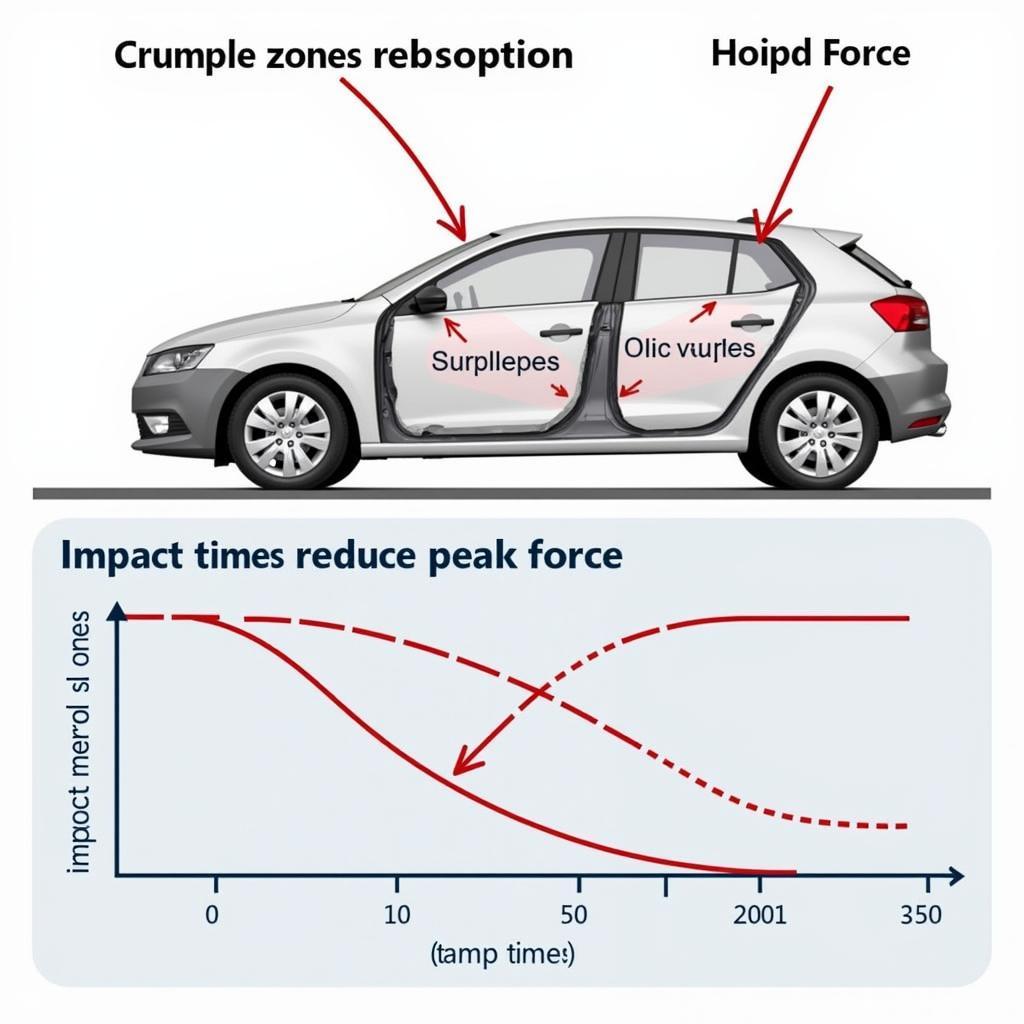Understanding the physics behind car crashes is crucial for anyone involved in automotive repair, maintenance, or accident investigation. Whether you’re a seasoned mechanic, a budding technician, or a car owner looking to understand the forces at play in a collision, this article will provide a comprehensive overview of the key concepts and calculations involved in analyzing car crashes.
Applying physics principles helps determine the severity of an impact, understand the resulting damage, and even reconstruct the events leading up to the crash. This knowledge is invaluable for making informed repair decisions, ensuring vehicle safety, and potentially preventing future accidents. From momentum and energy to impulse and force, we’ll delve into the core physics concepts that govern these events.
Momentum and Impulse in Car Crashes
Momentum, the product of an object’s mass and velocity, plays a significant role in car crashes. A heavier vehicle traveling at a higher speed will have greater momentum, and consequently, a larger impact force. The change in momentum during a collision is known as impulse. Impulse is directly related to the force applied and the duration of the impact. A shorter impact time results in a larger force, which explains why hitting a rigid wall is more damaging than hitting a deformable barrier.
Calculating Impulse and Force
Understanding how to calculate impulse and force is essential for analyzing car crashes. Impulse is equal to the change in momentum, which is calculated as the final momentum minus the initial momentum. Force, on the other hand, is equal to the impulse divided by the time of impact. These calculations are fundamental to understanding the magnitude of forces involved in a collision.
 Car Crash Momentum Calculation
Car Crash Momentum Calculation
Energy Transformations in Collisions
Kinetic energy, the energy of motion, is another critical concept in understanding car crashes. During a collision, kinetic energy is transformed into other forms of energy, such as deformation energy (the energy absorbed by the crumpling of the car’s structure), heat, and sound. The greater the change in kinetic energy, the greater the damage to the vehicles involved.
The Role of Crumple Zones
Modern vehicles are designed with crumple zones to increase the duration of the impact and thus decrease the force experienced by the occupants. These designated areas of the car are designed to deform and absorb energy during a crash, mitigating the impact on the passenger compartment. This design feature is a direct application of the physics principle of impulse.
 Crumple Zone Energy Absorption
Crumple Zone Energy Absorption
Coefficient of Restitution and Collision Types
The coefficient of restitution (COR) is a value that represents the “bounciness” of a collision. It ranges from 0 to 1, with 0 representing a perfectly inelastic collision (where the objects stick together after impact) and 1 representing a perfectly elastic collision (where kinetic energy is conserved). Understanding the COR can help determine the speed of the vehicles before and after a collision.
Analyzing Different Collision Scenarios
Different types of collisions, such as head-on collisions, rear-end collisions, and side-impact collisions, involve varying physics principles and calculations. Analyzing the specific scenario requires considering the angles of impact, the masses of the vehicles, and the pre-impact speeds. This information can be used to reconstruct the accident and determine the factors that contributed to the collision.
Applying Physics to Accident Reconstruction
By combining the principles of momentum, energy, and impulse, accident reconstruction experts can determine the sequence of events leading up to a collision. This involves analyzing the vehicle damage, skid marks, and other evidence to estimate the speed and direction of the vehicles involved.
“Understanding the physics behind a car crash is like piecing together a puzzle,” says Dr. Amelia Carter, a leading automotive physicist. “Each piece of evidence, from the deformation of the vehicle to the location of debris, provides valuable clues about the forces and energies at play.”
 Accident Reconstruction Physics Analysis
Accident Reconstruction Physics Analysis
In conclusion, understanding the “Physics Problem Set For Car Crashes” is essential for anyone involved in the automotive industry. From mechanics and technicians to accident investigators and insurance adjusters, this knowledge can help improve vehicle safety, make informed repair decisions, and prevent future accidents.
For any further assistance or inquiries, please don’t hesitate to contact AutoTipPro at +1 (641) 206-8880 or visit our office at 500 N St Mary’s St, San Antonio, TX 78205, United States. We’re here to help you navigate the complex world of automotive physics and ensure your safety on the road.





Leave a Reply